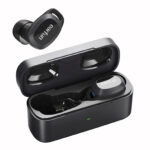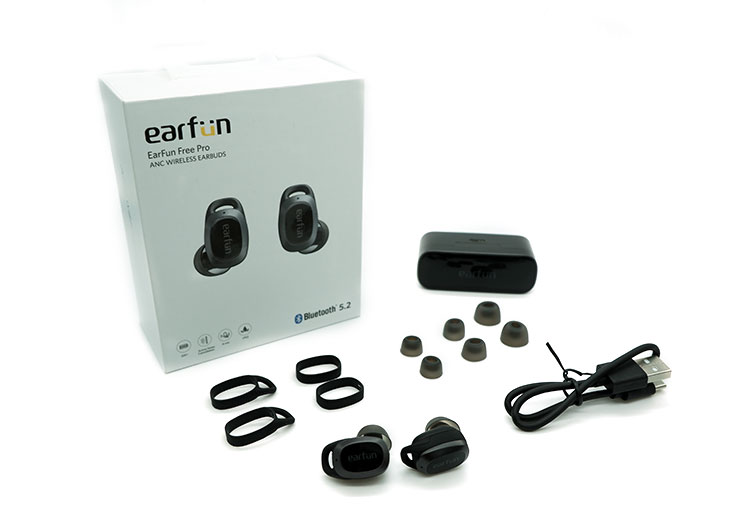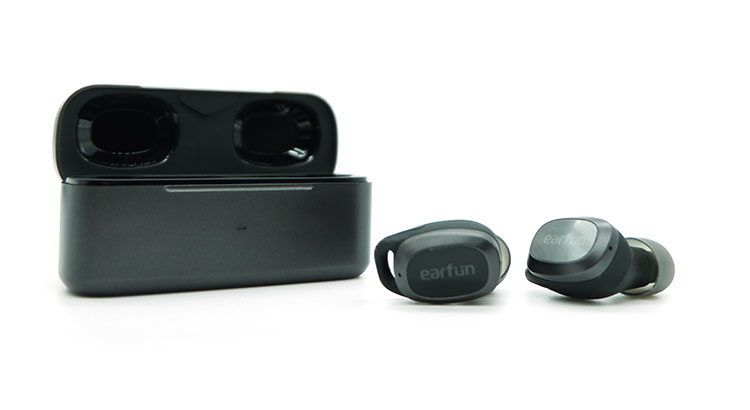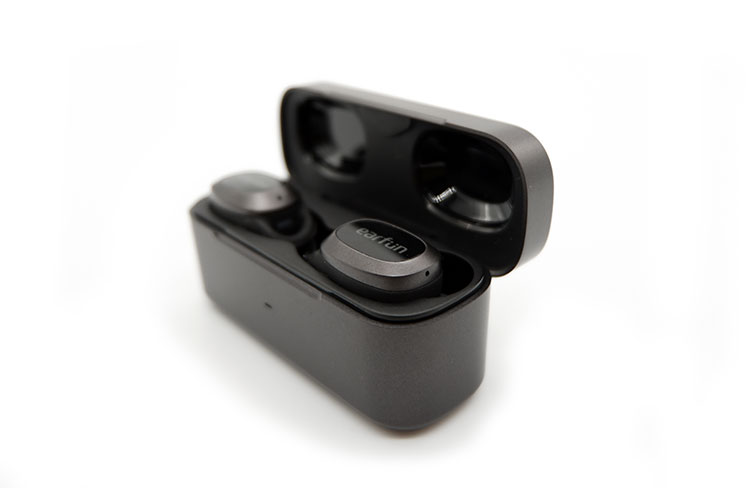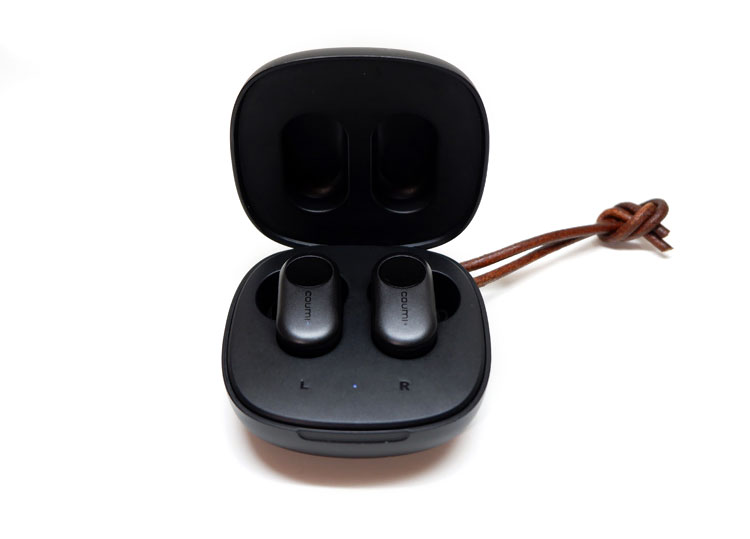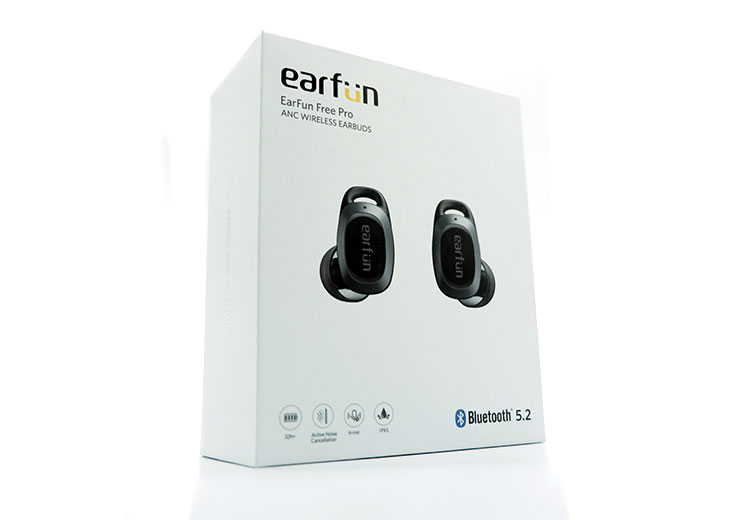The EarFun Free Pro is an affordable priced ANC capable single driver TWS featuring BT5.2 and up to 32 hours of battery life. It is priced at $59.99
Disclaimer: The EarFun Free Pro sent to us is a sample in exchange for our honest opinion in this review. We thank the team from Earfun for giving us this opportunity.
To read more about TWS products we have reviewed on Headfonics, click here.
Note, this review follows our new scoring guidelines for 2021 which you can read up on here.
Until March 31st, 2021 you can also get 20% off your purchase by entering the following discount code at the checkout: EARFUNHF. Headfonics receives no commission on this offer.
EarFun is a relatively new company that produces TWS earbuds and Bluetooth speakers. They launched their company through Indiegogo in 2018, and they have produced products that have caught the attention of many industry professionals.
Their 2 main lines of products include the EarFun Air and the EarFun Free. The EarFun Air is their larger Airpod style design, while the EarFun Free is a smaller TWS design that doesn’t have an Airpod-like stem.
This year, EarFun has decided to create the sequel to their multi-awarded EarFun Free TWS earbuds with the launch of the EarFun Free Pro. Priced at $59.99 this is one of the most affordable ANC equipped TWS we have reviewed to date.
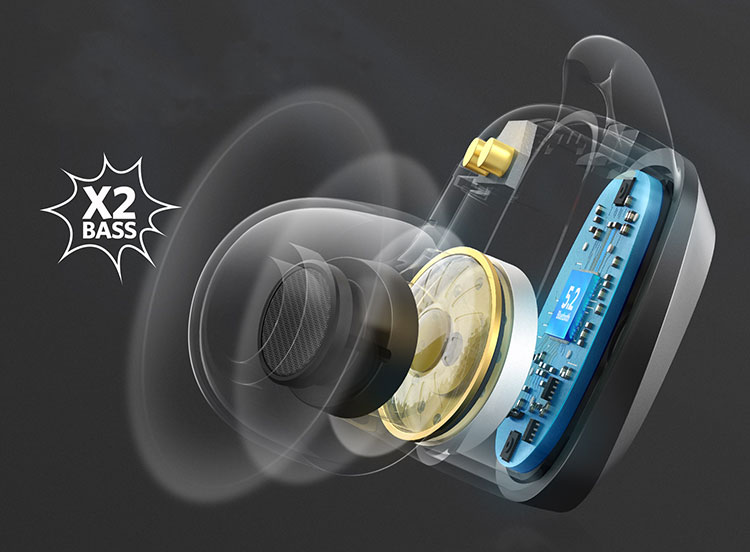
Features
The latest edition of the Free Pro is touted by EarFun as a pair of featherlight TWS earbuds that have enough battery to last the whole day. The Free Pro TWS earbuds feature 4 mics that are used for noise canceling that will attenuate outside noise during phone calls.
Although the Free Pro is meant to be a sequel to the original EarFun Free, the Free Pro is a whole new design. The Free Pro features Bluetooth 5.2, the latest version of Bluetooth and also comes with wireless charging with a total of 32 hours of battery life for day-long usage.
The drivers in the Free Pro are also updated with a dual composite dynamic driver, which is designed to produce clear sound with ‘2x the bass’. With all those new features, EarFun was also able to squeeze the Free Pro into an even smaller form factor than previous models.
Package & Accessories
The EarFun Free Pro comes in a standard white cardboard box, which is sufficient to protect the earbuds and the accessories while it’s being transported or stored.
Inside the box, the charging case is secured by a foam insert, and the earbuds are inside the charging case that is lined with plastic to protect the battery from being drained while the earbuds are still in storage.
Aside from the earbuds and the charging case, the Free Pro also comes with 3 pairs of extra ear tips in different sizes, 2 extra pairs of rubber bumpers for the earbuds, a USB C charging cable, and the manual.
Design
Charging Case
One of the standout features of the Free Pro is that the TWS earbud system is compact and light. The charging case as well as the earbuds themselves are lighter than most other TWS earbuds. This makes the Free Pro even more portable than usual.
Physically, the charging case is really small, and light at just 41g for the whole system. The case is a clamshell design with a magnetic closure that clicks shut tightly. The hinge system seems to be a little loose though, and I get some lateral movement when the top is closed.
Due to the smaller size of the charging case, space becomes a premium inside the Free Pro. To save on space, the Free Pro’s charging case is equipped with a single LED that changes colors depending on the amount of battery left in the charging case.
The light will flash every time the charging case is closed, and it displays green >30%, orange <30%, red < 10%, and flashing red <5%. While charging, the LED will be red, and it will turn green when it is fully charged.
This is a practical way to make the most of that single LED since their color-coded system can replace a 4 LED charge indicator in terms of functionality.
Earbuds
With the smaller case, the earbuds are also on the smaller side. Each earbud has the EarFun logo on the faceplates, but the left will be upside down when you open the case.
The earbuds also have color-changing LEDs to indicate their status, blue for power on, red for power off, flashing blue for pairing mode, no light for successful pairing, and finally violet for factory reset.
Comfort & Isolation
According to the specs sheet and my kitchen scale, each earbud weighs 4.1g, which makes the Free Pro one of the lighter TWS earbuds that I have seen. Each earbud has an in-ear design, but there is no need to force the earbuds deep into my ear canal.
With the smaller size of the earbuds, I was initially wary that they would fall off my ears when I wear them. But each earbud has small rubber bumpers that can be replaced with either a bumper with larger extensions or a bumper without any extensions. This effectively changes the overall size of the earbuds to ensure the proper fit of the earbuds ensure that they stay inside your ears.
With the weight and adjustable size of the earbuds themselves, the Free Pro can fit a lot more ear sizes. It might be a small innovation, but a lot of fit issues can be avoided using EarFun’s adjustable earbud system.
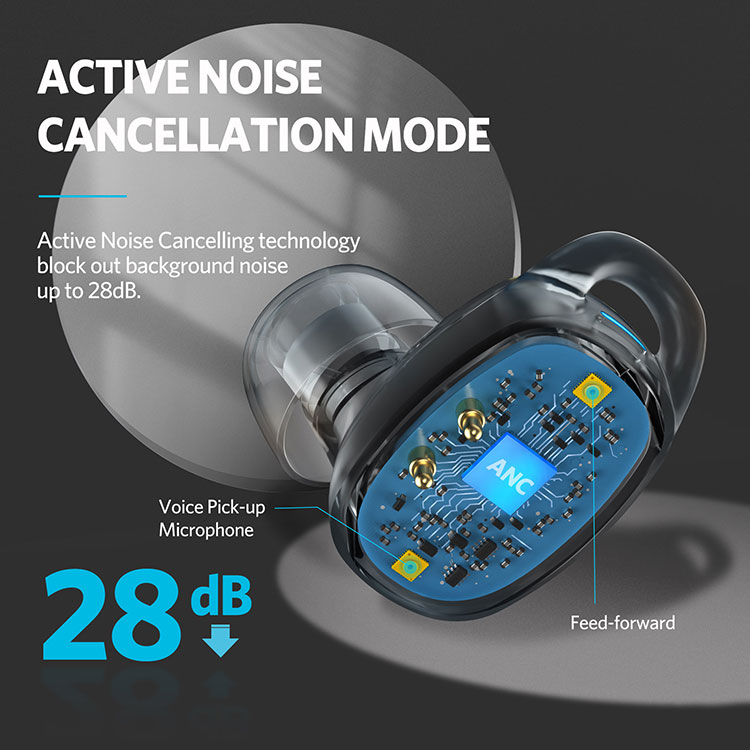
ANC mode
Typically, TWS earbuds only have a noise-canceling mode to clear up the voice while in a call. However, the Free Pro also features an ANC mode, as well as ambient and normal mode. These modes can be toggled by triple tapping on the left earbud.
With Normal mode, there is no sound processing, while ambient mode amplifies the noise from the environment. To my ears, the 2 modes are pretty close.
According to the marketing material, the Free Pro can attenuate ambient noise by 28dB when ANC mode is on. Turning on ANC mode significantly blocked out ambient noise, what’s impressive though is that the Free Pro was doing this without making me feel like my ears are being sucked out. It’s just silent.
Controls
Looking through the manual, it’s fairly comprehensive when it comes to how the Free Pro’s are controlled.
Interestingly, volume was prioritized when it comes to the controls, as it just needs a single tap to either increase the volume using the left earbud or increase it using the right earbud. Increasing the volume rapidly might be a bit hard though, since quickly tapping on either earbud may register as a double or triple tap.
Play/pause is toggled with a double tap on the right earbud. Triple taps on the right earbud will go to the next track, but going to the previous track required bringing my phone out since triple taps on the left earbud will toggle the ANC mode. Answering calls can also be done with double taps while rejecting calls requires touching and holding any earbud for 2 seconds.
The number of controls that are available on the earbuds are quite comprehensive, but it would have been nice to have controls for the previous track as well.
Battery life
On the specs sheet, it says that each earbud can last 6 hours with ANC, and 7 hours with ANC off, with the case carrying an additional 3 charges and some change.
In my real-world experience, each earbud lasts around 5.5 hours without ANC on while talking on the phone for around 1 hour, while the carrying case delivered on its promise of fully recharging both earbuds 3x and a bit more.
While there was some variation when it comes to how long the battery lasted, my 1-hour phone call probably played a big part in reducing battery life significantly. Whatever the case may be though, the Free Pro will have enough battery to last throughout the day on typical usage.
Sound Impressions
Bass
In the marketing material, it says that the Free Pro is designed to have 2x the bass while retaining clarity. On both counts, I believe that EarFun delivered on that promise. The sub-bass on the Free Pro is immediately pushed forward. The deep bass tone at the start of Drink Up by Train is immediately apparent.
Moving on to the midbass region, it’s a bit more elevated compared to the sub-bass. Giving drums and bass notes a good amount of heft. With the song 1973 by James Blunt, there is an underlying bass note, and while the bass note is presented with a good amount of heft, there are some textures that are not displayed too well on the Free Pro.
While the promised amount of bass is easily perceived with the Free Pro, the attack of drum hits lacks some bite. On the song Hard Times by Paramore, there are successive drum hits that usually have more bite to each hit, but each hit sounds a bit blunter with the Free Pro.
The sense of scale from the bass is quite interesting though, in the song City Love by John Mayer, the bass feels like there is no point source for it, but instead, it felt like bass encompassed the soundscape.
In terms of bass, EarFun wasn’t kidding when they said that the Free Pro would have 2x time bass. There is a good sub-bass extension, and the mid-bass region has a sense of heft and scale, however, the drivers inside the Free Pro lack the speed to give drum hits more immediate attack.
Midrange
Compared to both the bass and treble, the midrange is the most pushed back of the 3 frequency ranges. Male vocals sound a bit more pushed back, and the harmonic overtones that give male vocals and airier quality are not too prominent. The vocals of James Blunt on the song Monsters ended up sounding a bit thin.
In contrast, female vocals sound a bit thicker and more forward. Natasha Beddingfield’s vocals on Gotta be Patient is pushed forward, and lush. Guitar strums on ‘Gotta be Patient’ are also very well defined, and the tone of the guitar itself sounds full.
With piano tracks like River Flows in You by Yiruma, pianos tend to sound bright. Which means that the higher-order harmonics are slightly accentuated. Although the piano’s harmonics are accentuated, they never end up being shrill like how the piano on that particular song tends to sound on some brighter headphones.
While the midrange is the most pushed back frequency range on the Free Pro, the midrange can still be detailed especially the upper midrange.
Treble
In terms of quantity, the treble is slightly more elevated than the midrange but less so than the bass. With the shimmering quality of the synthesizer on Fireflies by Owl City, there is a sense of realism and quality in each note.
On its own, the treble can do well in presenting details and have enough quantity to sound shimmering. However, when the song is playing both bass and treble, the bass tends to overshadow the treble, like can be found in 1973 by James Blunt.
The execution of the treble region is done well, as details remain crisp, while never going into the territory of being bright. As long as the song doesn’t have too heavy a bass line, the treble frequencies can shine through quite well with the Free Pro.
Staging
In terms of soundstage, the Free Pro has an expansive soundstage that can extend a bit beyond my head. However, images within the soundstage can only be heard in the extremes. Where there are images that can be formed further away from my head, or in my head alone, there’s not much in between.
Drum rolls on Isn’t She Lovely by Stevie Wonder sounds like it’s moving around inside my head. Each image is created with a good amount of directionality. However, each image sounds more like large masses of sound, instead of creating pinpoint accurate sound elements.
Wireless Performance
Connectivity
Right in front of the box, EarFun emphasizes that the Free Pro features Bluetooth 5.2, while the available codecs only being SBC and AAC.
The initial pairing experience between my phone and the Free Pro is seamless, as they immediately go into pairing mode when I first take them out of the case, and detecting them on my phone was not difficult at all. Subsequent connections between my phone and the Free Pro are also seamless.
With the Free Pro in my ears, and walking away from my phone, I only started losing a stable connection when I moved 10 meters away from my office which has a 9” thick wall. This is pretty impressive since TWS earbuds wouldn’t usually need this kind of range.
Latency
When watching a movie, there was no point that I noticed any latency between the audio and the video. To me, there wasn’t any need to turn on the low latency mode since I never perceived any delays in the audio transmission.
Using a latency test, the latency peaked at just 100mS with low latency off. Turning it on synced up the audio more tightly. While the low latency mode made a difference, both modes worked smoothly for most of my applications.
Call quality
Using the Free Pro for calls, my voice came across clear in general, however, there are cuts and some higher frequency noises when I deliberately talk in front of a fan. The quality of my voice went through nicely though, as long as I didn’t put the Free Pro’s ANC capability through too much stress. The voice of the other person on the other end of the line came through though.
Select Comparisons
Coumi ANC-860
Technical
The 2 earbuds are priced equally and both having ANC modes, so it would be interesting to compare the 2 earbuds. The package of the ANC-860 comes with more ear tips, but this is probably because of the proprietary system that it requires, compared to the Free Pro having a more standard ear tip where aftermarket ear tips can be found.
In terms of fit, I had fewer issues with the Free Pro, since they were more secure in my ears compared to the ANC-860. The ANC-860 is rated for IPX7 though, instead of the Free Pro’s IPX5 rating, which means that the ANC-860 can withstand more water pressure compared to the Free Pro.
Although both IEMs just have 1 LED on the case, the one on the Free Pro provides more information by changing the color of the light, while the ANC-860 just has white and red. Battery life is about the same on the 2 TWS earbuds, and fully charging both TWS cases can be done in less than an hour. The Free Pro has wireless charging options though.
Both TWS systems have ANC mode, Ambient mode, and normal mode. However, the ANC-860 has a more exaggerated ANC and ambient mode. This results in a more sucked-out feeling when the ANC mode is engaged. The isolation on either earbud is about the same though, because the ANC-860 provides less passive isolation compared to the Free Pro.
Performance
Both TWS earbuds have generous amounts of bass, but the presentation is quite different. The ANC-860’s bass is a bit more bloated and muddy in comparison to the Free Pro. While the lower midrange is about the same, the upper midrange is a bit more elevated on the Free Pro.
The treble on the ANC-860 is more rolled off compared to the Free Pro. With the improved control on the bass region the Free Pro offers a better sense of detail retrieval and a slightly more balanced frequency response.
Although the Free Pro’s treble can be overshadowed by the bass if there is a lot of bass in a particular track, the treble is even more overshadowed by the bass on the ANC-860.
The sense of width is more pronounced on the Free Pro owing to the better overall clarity, and comparatively more elevated treble region. Image clarity is also comparatively sharper than on the ANC-860.
While the 2 TWS earbuds are quite similar on paper, the Free Pro is slightly more balanced of the two, with similar amounts of bass quantity while having more control. The IPX7 certification on the ANC-860 might be attractive to some though since the Free Pro is only certified up to IPX5.

Alpha & Delta Elite
Technical
The Alpha & Delta Elite is also priced competitively against the EarFun Free Pro. Both earbuds have a similar set of features, with a similarly compact form-factor. The Elite has slightly larger earbuds though, so seeing the Free Pro have small earbuds with rubber adjustment mechanisms makes it more of a universal fit comparatively.
The charging case of the 2 earbuds makes use of a solitary LED to indicate battery life. However, the LED on the Elite is a bit more confusing because the color changes from green to yellow are more subtle instead of green, to orange, then red on the Free Pro. In terms of the amount of battery life, they’re comparable though.
In terms of codecs, the Elite has AptX, instead of just SBC and AAC on the Free Pro. The Free Pro has ANC modes though, where the user will have the ability to toggle between ANC mode on, Ambient mode, and normal mode.
Having the ability to toggle the ANC mode might have made the Free Pro’s controls a bit more complicated though. Aside from the standard controls for play/pause, the Elite has previous and next track controls by double-tapping either earbud, while volume can be controlled by holding either earbud.
Although some control functions can be done on the Free Pro that can’t be done with the Elite, a glaring difference is that there is control for the previous tracks on the Elite.
Performance
Both the Elite and Free Pro are advertised as bass-emphasized TWS earbuds, and rightly so. They can both produce a generous amount of bass, however, the Elite tends to roll off a bit earlier in the sub-bass region.
In the midrange, the Elite is slightly more forward, and more euphonic, giving vocals a sense of texture and depth. The treble rolls off a bit earlier on the Elite though.
In terms of tonal balance, the Free Pro tends to feel more balanced because of the slightly more elevated treble. This makes it feel a bit less congested compared to the darker tonality on the Elite.
The size of the soundstage on the Free Pro is slightly larger and out of my head, while the Elite tends to be more intimate. Imaging on the Free Pro is a bit more accurate than the Elite as well since the Free Pro can create a more coherent center image that is pushed forward beyond my head.
Our Verdict
The Free Pro is a well-built TWS earbud system that’s compact while remaining feature-packed. Despite only being equipped with 1 LED, it can change into different colors that can compensate for the lack of additional LEDs that indicate battery life. They also feature adjustable size ear tips and earbud bumpers to obtain that perfect fit.
The user-controllable ANC feature is a nice addition, but this led to the Free Pro lacking some key control features, particularly previous track controls on the earbuds.
With an overall asymmetrical V-shaped tonality, the Free Pro delivered on their promise of creating TWS earbuds with 2x bass while retaining clarity. Despite the slight lack of a good midrange presence, the bass and the treble on the Free Pro give it a relatively balanced tonality.
EarFun Free Pro Specifications
- Active Noise Cancellation up to 28dB
- Customized Noise-Cancellation Algorithm for Excellent Isolation
- Bluetooth 5.2 and Support Newest MCSync Technology, for Stable Connections and Extended Working Range
- Low Latency Mode improves Video and Gaming Experiences
- Dual Composite Dynamic Drivers Deliver Superior Sound and Balance
- 32-Hour Total Playtime: 7 Hours + 25 Hours with Charging Case
- Fast Charging, 10 Min Charging = 2 Hours Playtime
40-Min Full Charging, 32 Hours Playtime - Wireless Charging Compatible
- Intuitive Touch Control + Volume Control
- Single Earbud Mode – Right or Left Independent Use
- Activate Voice Assistant


